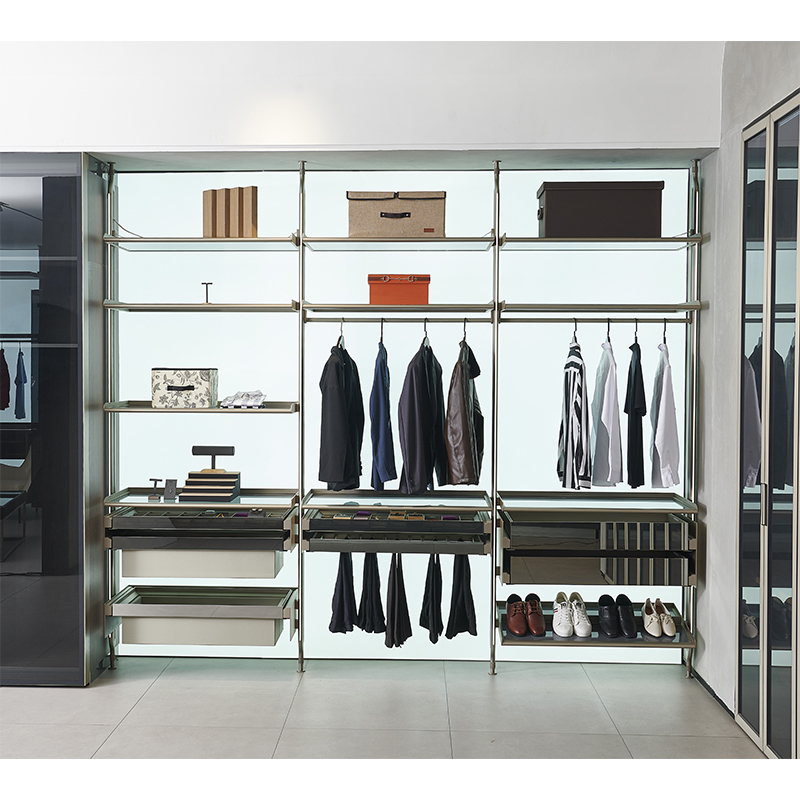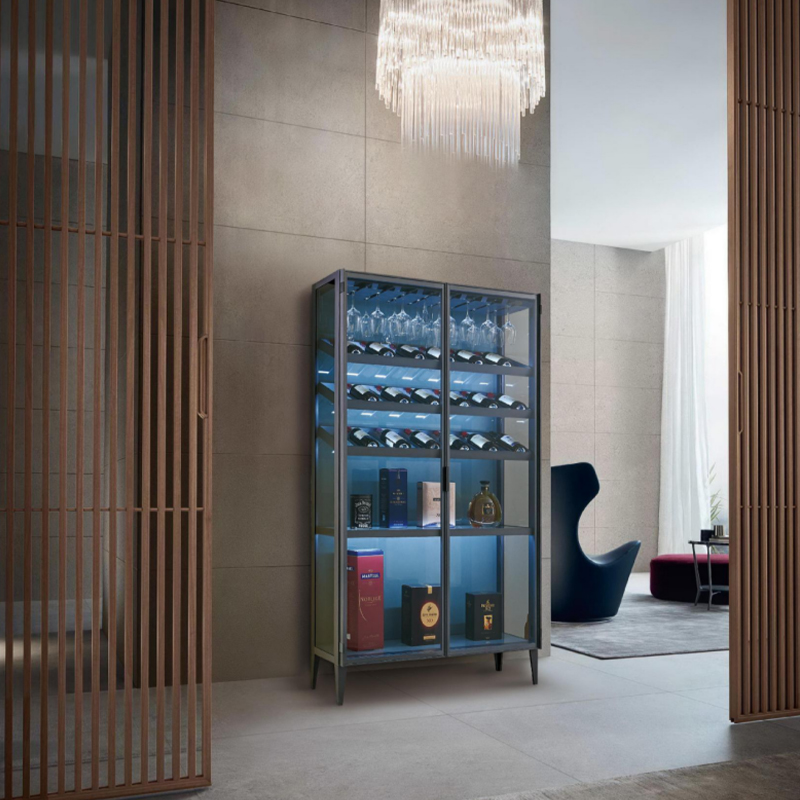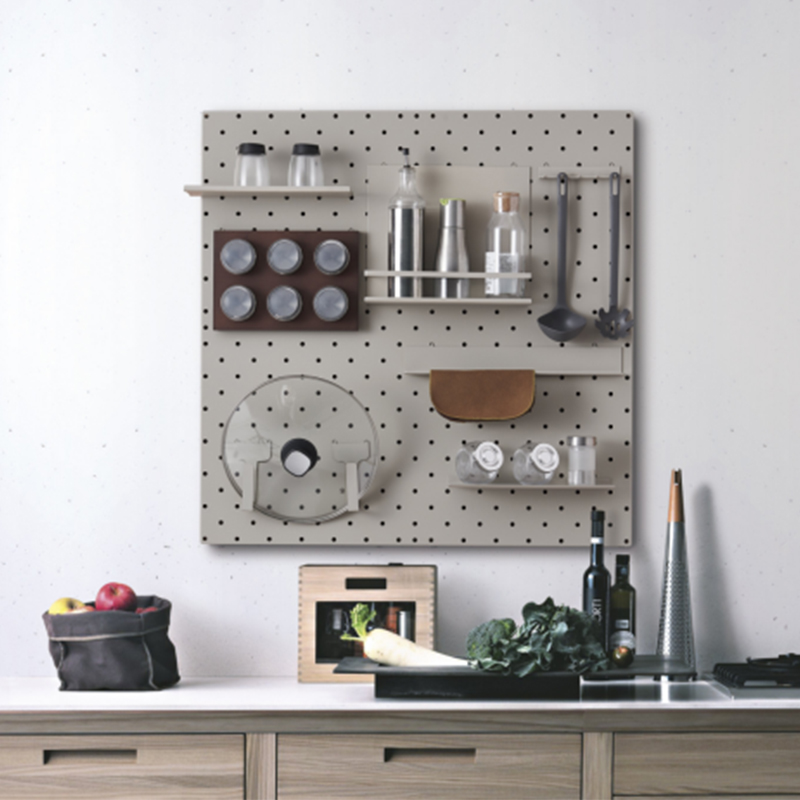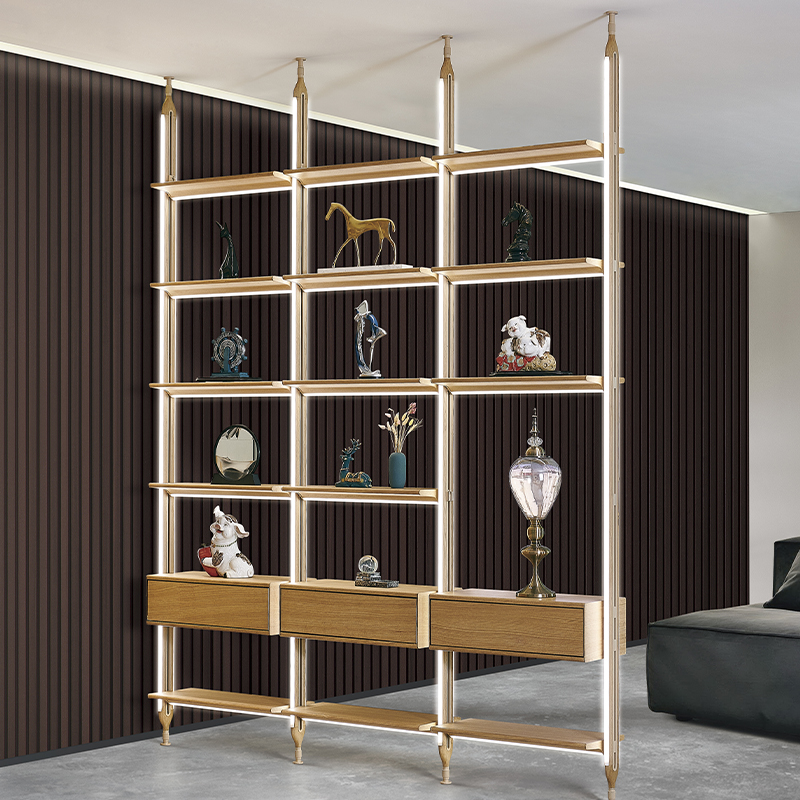Does pegboard have high strength and corrosion resistance, and can withstand long-term loads without deformation?
Release Time : 2025-10-09
In modern kitchen design, pegboard, as an efficient and flexible wall storage system, is gradually replacing traditional closed cabinets or single hooks, becoming a core feature for improving space utilization and ease of use. However, kitchen environments are complex and dynamic, subject to constant high temperatures, high humidity, grease, and steam. Furthermore, pegboard must constantly bear the weight of various kitchen utensils, including pots, knives, and seasoning bottles. If the material is not strong enough, it is prone to deformation, rusting, loosening, or even falling off, which not only affects the user experience but also poses a safety hazard. Therefore, whether the pegboard material is strong and corrosion-resistant, and whether it can maintain structural stability under long-term loads, is a crucial factor in determining its quality and durability.
High-quality pegboard is carefully selected, typically using cold-rolled steel, stainless steel, or high-strength aluminum alloy as its base material. These metals possess excellent mechanical properties and can withstand the frequent hanging and unhanging and concentrated loads of daily use. Cold-rolled steel undergoes precision milling, resulting in a dense internal structure and high tensile strength, making it less susceptible to plastic deformation due to external forces. Stainless steel possesses inherently excellent corrosion resistance, effectively resisting oxidation and rust even after prolonged exposure to moisture and oil fumes. High-strength aluminum alloy maintains sufficient rigidity while significantly reducing overall weight, facilitating installation and ensuring balanced wall load-bearing performance. Regardless of the material, the thickness and internal reinforcements are carefully designed to ensure that pegboard remains flat even under full load, without bending, sagging, or edge lift.
In actual use, the load-bearing capacity of pegboard depends not only on the material itself but also on the stability of its overall structure. High-quality pegboard typically features reinforcing ribs or a support frame on the back to evenly distribute load across the entire board, preventing localized stress concentration and deformation. The layout of mounting holes and the fixing method are also crucial. Through multiple anchor points, the pegboard and wall form a unified load-bearing system, effectively resisting the torsional and shear forces generated by suspended loads. Even when used to hang heavy utensils like woks and soup pots for extended periods, pegboard remains vertical and stable, preventing sagging or loosening due to metal fatigue.
Corrosion resistance is also crucial for pegboard's long-term performance in kitchens. Ordinary carbon steel, if not effectively protected, is susceptible to electrochemical corrosion in humid environments, resulting in surface rust. This not only affects appearance but also weakens the material and shortens its service life. To address this, high-quality pegboard undergoes multiple surface treatments based on the base material. For example, electrostatic spraying can apply a dense epoxy or polyester coating to create a physical barrier against moisture and oil, while electroplating and passivation processes can enhance the chemical stability of the metal surface. Some high-end products even use 304 or higher grade stainless steel to fundamentally eliminate the possibility of rust. These treatments not only enhance corrosion resistance but also create a smoother, easier-to-clean surface that can be restored with a simple wipe, preventing dirt from penetrating the material.
Pegboard's durability is also enhanced by the reinforced design of accessory attachment points. Each socket and guide is precision-stamped and edge-reinforced, ensuring hooks, knife holders, and other accessories remain secure and stable once inserted. Even with frequent insertion and removal, or lateral stress, the holes remain stable and reliable, ensuring long-term use. This meticulous craftsmanship is the core of high-quality pegboard's ability to withstand the test of time.
From a long-term perspective, pegboard's high strength and corrosion resistance not only reduce replacement frequency and maintenance costs, but also ensure a safe and tidy kitchen environment. It resists deformation that could affect accessory installation, nor does it rust and stain kitchenware or walls. Whether subjected to frequent daily cooking or years of continuous service, pegboard provides consistent, stable storage support.
In summary, pegboard's high strength and corrosion resistance are the foundation of its ability to withstand long-term loads and maintain deformation in the harsh environment of the kitchen. Through the use of selected materials, scientific structural design, and advanced surface treatments, modern pegboard has evolved from a simple storage tool into a functional, durable, and safe kitchen infrastructure. In today's pursuit of efficient, clean and sustainable life, this "silent supporter" is silently guarding every family's cooking space with its solid quality.
High-quality pegboard is carefully selected, typically using cold-rolled steel, stainless steel, or high-strength aluminum alloy as its base material. These metals possess excellent mechanical properties and can withstand the frequent hanging and unhanging and concentrated loads of daily use. Cold-rolled steel undergoes precision milling, resulting in a dense internal structure and high tensile strength, making it less susceptible to plastic deformation due to external forces. Stainless steel possesses inherently excellent corrosion resistance, effectively resisting oxidation and rust even after prolonged exposure to moisture and oil fumes. High-strength aluminum alloy maintains sufficient rigidity while significantly reducing overall weight, facilitating installation and ensuring balanced wall load-bearing performance. Regardless of the material, the thickness and internal reinforcements are carefully designed to ensure that pegboard remains flat even under full load, without bending, sagging, or edge lift.
In actual use, the load-bearing capacity of pegboard depends not only on the material itself but also on the stability of its overall structure. High-quality pegboard typically features reinforcing ribs or a support frame on the back to evenly distribute load across the entire board, preventing localized stress concentration and deformation. The layout of mounting holes and the fixing method are also crucial. Through multiple anchor points, the pegboard and wall form a unified load-bearing system, effectively resisting the torsional and shear forces generated by suspended loads. Even when used to hang heavy utensils like woks and soup pots for extended periods, pegboard remains vertical and stable, preventing sagging or loosening due to metal fatigue.
Corrosion resistance is also crucial for pegboard's long-term performance in kitchens. Ordinary carbon steel, if not effectively protected, is susceptible to electrochemical corrosion in humid environments, resulting in surface rust. This not only affects appearance but also weakens the material and shortens its service life. To address this, high-quality pegboard undergoes multiple surface treatments based on the base material. For example, electrostatic spraying can apply a dense epoxy or polyester coating to create a physical barrier against moisture and oil, while electroplating and passivation processes can enhance the chemical stability of the metal surface. Some high-end products even use 304 or higher grade stainless steel to fundamentally eliminate the possibility of rust. These treatments not only enhance corrosion resistance but also create a smoother, easier-to-clean surface that can be restored with a simple wipe, preventing dirt from penetrating the material.
Pegboard's durability is also enhanced by the reinforced design of accessory attachment points. Each socket and guide is precision-stamped and edge-reinforced, ensuring hooks, knife holders, and other accessories remain secure and stable once inserted. Even with frequent insertion and removal, or lateral stress, the holes remain stable and reliable, ensuring long-term use. This meticulous craftsmanship is the core of high-quality pegboard's ability to withstand the test of time.
From a long-term perspective, pegboard's high strength and corrosion resistance not only reduce replacement frequency and maintenance costs, but also ensure a safe and tidy kitchen environment. It resists deformation that could affect accessory installation, nor does it rust and stain kitchenware or walls. Whether subjected to frequent daily cooking or years of continuous service, pegboard provides consistent, stable storage support.
In summary, pegboard's high strength and corrosion resistance are the foundation of its ability to withstand long-term loads and maintain deformation in the harsh environment of the kitchen. Through the use of selected materials, scientific structural design, and advanced surface treatments, modern pegboard has evolved from a simple storage tool into a functional, durable, and safe kitchen infrastructure. In today's pursuit of efficient, clean and sustainable life, this "silent supporter" is silently guarding every family's cooking space with its solid quality.








